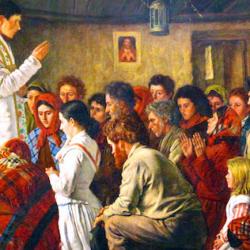Ben Cobley’s The Tribe is a detailed, sobering examination of the left-liberal system of identity politics. Cobley, a leftwing journalist, describes a diversity “system.” The system is founded on a division of the population between favored and unfavored groups, identified by race, sex and sexual orientation, age, religion, class, wealth, etc. Well-placed managers and brokers (often white and male) act as adminstrators on behalf of favored groups, and use their clout to bludgeon members of unfavored groups when they say or do anything that violates the system’s purity rules and taboos.
One of his extended examples of the system at work is the supposed increase in the incidence of hate crimes following the Brexit referendum. The number of reported incidents increased, but since no evidence is required beyond the perception of the victim it’s impossible to say if expressions of hate actually increased.
Besides, Remain politicians called for more reporting of incidents, and even suggested that an increase in reported hate crimes would be a sign of success. Cobley writes, politicians explicitly stated “that an increase in hate crime reporting is a sign that ‘we’ are having a positive impact—in this case because it is helping reveal a truer picture about how widespread this sort of incident is. This ability of politicians to influence crime statistics, simply by raising awareness and encouraging people to report incidents, is worth reflecting on.”
One of the effects of the system is to criminalize policy differences: “After the referendum, a staunchly anti-Tory, anti-Brexit Oxford physics professor called Joshua Silver reported the Home Secretary Amber Rudd (who had actually been a prominent Remain campaigner) to the police for talking about tightening immigration rules as part of the Brexit process in a draft of a conference speech. . . . Under Rudd’s own department’s guidelines, it had to be recorded as a ‘hate incident,’ even though this would criminalise the views of maybe 60–80 per cent of the population.”
The media instantly took certain incidents as examples of hate crime, regardless of whether there was evidence, and sometimes in the face of contrary evidence. Cobley mentions an incident involving graffiti on a Polish cultural center in Hammersmith, where some painted ‘F*** You OMP” on the door.
Cobley explains what happened next: “The centre promptly reported it to police as a racially-aggravated hate crime while media organisations reported that the message said ‘Go Home,’ cuing a huge wave of sympathy and support mixed with angry denunciations of Brexit, plus Leave voters and campaigners. However, the centre’s management and London’s Metropolitan Police, which was still investigating the incident as a hate crime eight months later, seemingly failed to engage with what the graffiti said. It did not tell Poles to go home; it rather directed its negative sentiments at ‘OMP’, which is an acronym for ‘Ośrodek Myśli Politycznej,’ a Eurosceptic Polish think tank that had issued a statement congratulating Britain for the Brexit vote.”
In other words, this wasn’t an incident of Leave racism. It was an example of Remainer sour grapes, an example of Remainer racism directed against the actual opinions of Polish people.
All this is much to the advantage of the diversity brokers. After Brexit, “they activated the system of diversity: joining the apparently victimised identity group, as a group, to the administration of protection by those who oversee our public life in the media and elsewhere. . . . It has helped activists and community leaders to promote their victimhood, claim that it is getting worse, and demand more resources to address it, reducing budgets for other things. It has enabled those who wanted to remain in the EU to demonise Leave voters and the Vote Leave campaign. . . . It has given the ‘facts’ to anyone, in Britain or abroad, who wants to believe—and wants others to believe—that ‘Brexit Britain’ is a nasty, racist country. It has taken a cudgel to the supposed trustworthiness and independence of official statistics.”
In particular, by making immigrants appears as a victim group “in need of support and protection from those who preside over our public life,” they were able to make “the Leave side appear outside the system, outside the bounds of acceptability, implicated in hate crime and murder. For many of those who were attracted towards this narrative, the question of Remain or Leave became one about whether Britain was an acceptable, civilised country or a place dominated by extremist, far right haters and racist murderers.”












